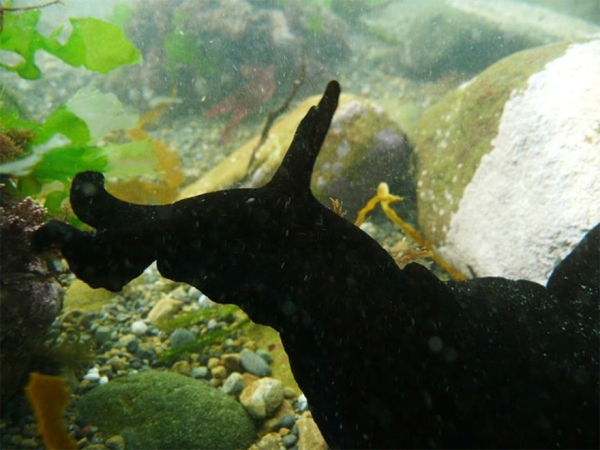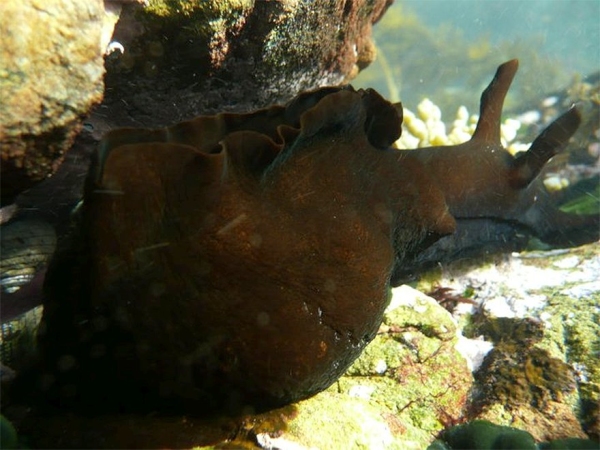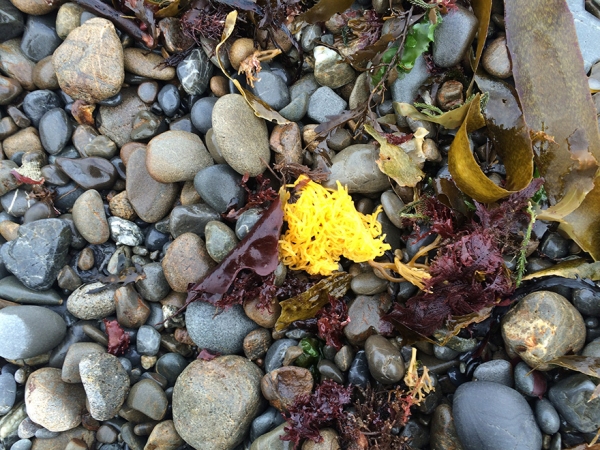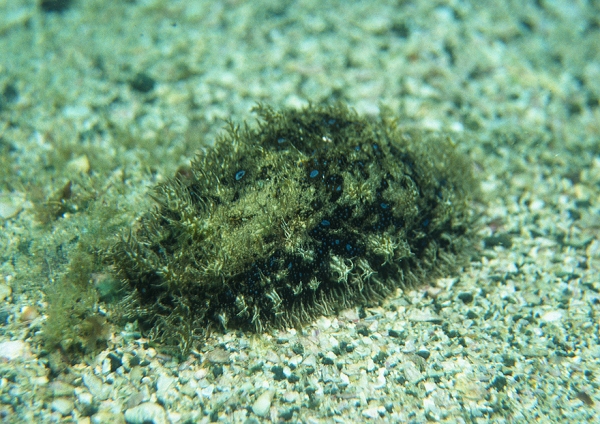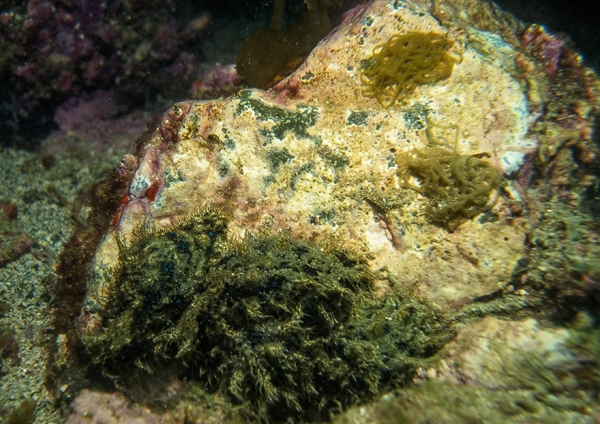A sea hare is a type of opisthobranch or sea slug in the phylum Mollusca, with soft bodies, a reduced internal shell and two tall rhinophores coming out of their heads that resemble the ears of a hare.
They feed on algae in shallow water and if disturbed can produce a toxic ink to deter and escape from predators. The theory is that the purple or pink ink that many species produce is a byproduct from eating red algae (Chapman & Fox, 1969). Researchers have discovered interesting antibacterial properties in a protein isolated from sea hare ink called ‘escapin’ (Yang et al., 2005).
Sea hares can crawl along the seafloor, but can also swim though the water very gracefully as seen from this image of a sea hare in Bermuda taken by Pete Notman.
A regular Wellington visitor
A species commonly found around the Wellington region is Aplysia juliana (Quoy & Gaimard, 1832) which is also known as the black or walking sea hare. A. juliana feeds on the bright green sheet-like algae, Ulva. It is cosmopolitan, but is found in large numbers in the shallows around Wellington in March–June while it is breeding. The Island Bay Marine Education Centre Bait House Aquarium often has some sea hares on show in their tanks during this time of year.
Spaghetti egg masses
The eggs of Aplysia juliana are fluorescent yellow and resemble cold leftover noodles when washed up on the beach. We have also seen pale pink spaghetti egg masses on the shore line, but it is not known if they are from the same species. Sea hares lay their eggs and then die not long after, which is similar to the strategy of their relations the squid. This is why you might also find the sea hares washed up on the beach at this time of year too.
Sea hares are hermaphrodites, meaning they have both male and female sex organs.
A shaggy sea hare
This very cryptic looking specimen of sea slug is called the shaggy sea hare, Bursatella leachii (Blainville, 1817), found in northern New Zealand and around the globe with a circum-tropical distribution. This species eats cyanobacteria from the sediment and emits a toxic purple ink cloud when disturbed.
Further information
- Island Bay Marine Education Centre - Sea Hares are back
- The sea slug forum - What are Sea Hares?
- Yang H., Johnson P. M., Ko K-C., Kamio M., Germann M. W., Derby C. D., and Tai P. C. (2005). Cloning, characterization and expression of escapin, a broadly antimicrobial FAD-containing l-amino acid oxidase from ink of the sea hare Aplysia californica. Journal of Experimental Biology 2005 208: 3609-3622; doi: 10.1242/jeb.01795

